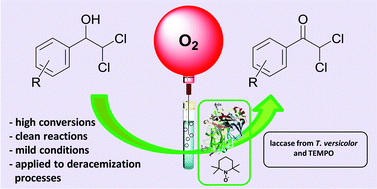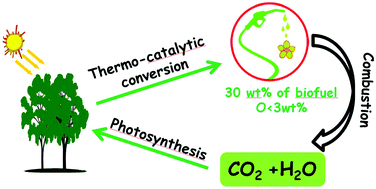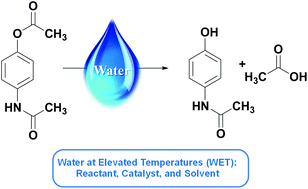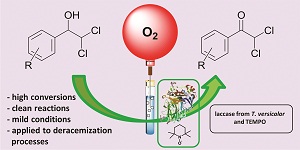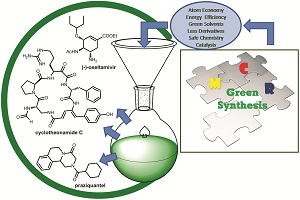Issue 4 of Green Chemistry is a part-themed issue on ‘Sustainable polymers: reduced environmental impact, renewable raw materials and catalysis’. Guest Editor Professor Michael Meier (Karlsruhe Institute of Technology, Germany) introduces the issue in his Editorial.
This special issue is being published in collaboration with our sister journal Polymer Chemistry who will soon be publishing their issue on ‘Sustainable polymers: replacing polymers derived from fossil fuels’ Guest Edited by Stephen A. Miller (University of Florida, USA). The two issues will be collated online – look out for the full ‘Sustainable Polymers’ collection later this month on our Themed Collections tab.
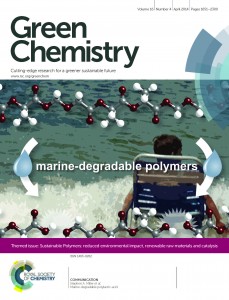 The outside front cover features the communication “Marine-degradable polylactic acid” by Ryan T. Martin, Ludmila P. Camargo and Stephen A. Miller.
The outside front cover features the communication “Marine-degradable polylactic acid” by Ryan T. Martin, Ludmila P. Camargo and Stephen A. Miller.
Issue 4 contains a number of excellent Perspective articles, Critical and Tutorial Reviews:
Towards sustainable polymer chemistry with homogeneous metal-based catalysts
Kristin Schröder, Krzysztof Matyjaszewski, Kevin J. T. Noonan and Robert T. Mathers
Hydrogen-bonding organocatalysts for ring-opening polymerization
Coralie Thomas and Brigitte Bibal
Matrices from vegetable oils, cashew nut shell liquid, and other relevant systems for biocomposite applications
Rafael L. Quirino, Thomas F. Garrison and Michael R. Kessler
Renewable terephthalate polyesters from carbohydrate-based bicyclic monomers
Sebastián Muñoz-Guerra, Cristina Lavilla, Cristina Japu and Antxon Martínez de Ilarduya
The use of lipases as biocatalysts for the epoxidation of fatty acids and phenolic compounds
Chahinez Aouf, Erwann Durand, Jérôme Lecomte, Maria-Cruz Figueroa-Espinoza, Eric Dubreucq, Hélène Fulcrand and Pierre Villeneuve
 “Water at elevated temperatures (WET): reactant, catalyst, and solvent in the selective hydrolysis of protecting groups” is the paper highlighted on the inside front cover by Wilmarie Medina-Ramos, Mike A. Mojica, Elizabeth D. Cope, Ryan J. Hart, Pamela Pollet, Charles A. Eckert and Charles L. Liotta
“Water at elevated temperatures (WET): reactant, catalyst, and solvent in the selective hydrolysis of protecting groups” is the paper highlighted on the inside front cover by Wilmarie Medina-Ramos, Mike A. Mojica, Elizabeth D. Cope, Ryan J. Hart, Pamela Pollet, Charles A. Eckert and Charles L. Liotta
Perspective articles, Critical and Tutorial Reviews from Issue 4:
Hydroxymethylfurfural production from bioresources: past, present and future
Siew Ping Teong, Guangshun Yi and Yugen Zhang
Journey on greener pathways: from the use of alternate energy inputs and benign reaction media to sustainable applications of nano-catalysts in synthesis and environmental remediation
Rajender S. Varma
Carbonylation in microflow: close encounters of CO and reactive species
Takahide Fukuyama, Takenori Totoki and Ilhyong Ryu
Mixing ionic liquids – “simple mixtures” or “double salts”?
Gregory Chatel, Jorge F. B. Pereira, Varun Debbeti, Hui Wang and Robin D. Rogers
Heterocycle construction using the biomass-derived building block itaconic acid
Alexandra M. Medway and Jonathan Sperry
Keep up-to-date with the latest content in Green Chemistry by registering for our free table of contents alerts.


